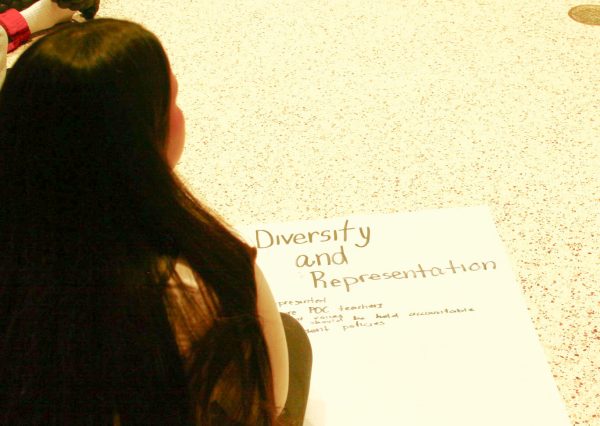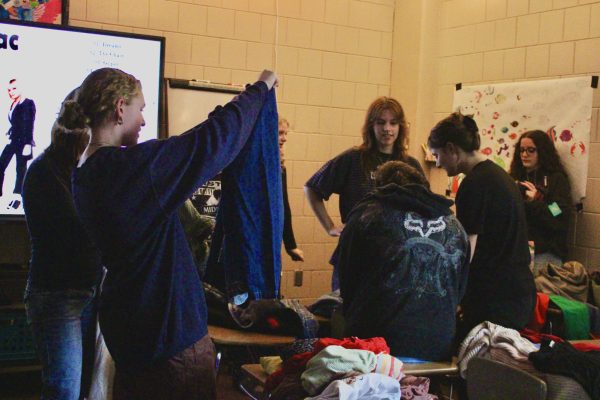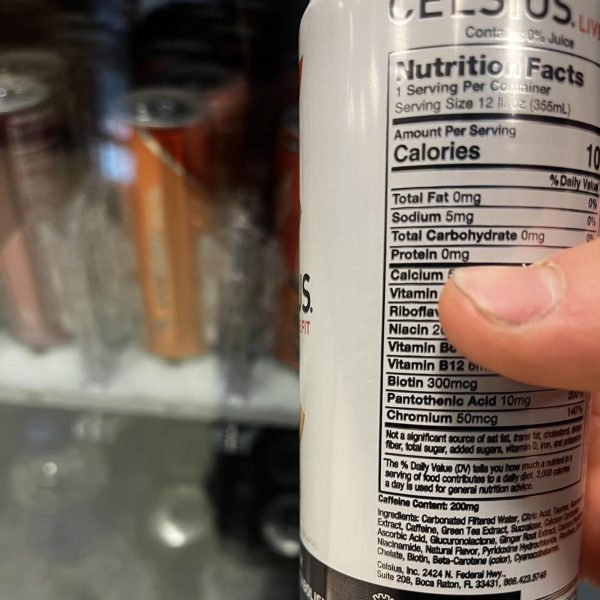Families express concern about Trump’s proposal to reduce free school meals
November 28, 2019

Education is key to a successful life and career. The future of our society depends on the younger generations to make a change, therefore, proper nutrition must be provided. President Trump’s administration is considering reducing the number of students able to receive free lunches at school. The support and privilege of applying for free or reduced lunches should be given to students of low income families because a nutritious meal is needed during the school day.
The SNAP (Supplemental Nutrition Assistance Program) will be cut, so free lunches at schools will not be eligible for roughly 1 million students in America. Decreasing the number of students eligible for free lunches will lead to more kids without meals at school. In reality, all those involved in education are affected, including those which partake in free or reduced meals, those which do not rely on free or reduced meals and those which make and provide meals. Overall, the act of removing free meals will conclude to lack of concentration and focus during academic classes, as well as produce tiredness and hunger.
“I guess my first thought is that if it affects learning and children that are the future, look at that, he shouldn’t be stealing or shouldn’t be cutting funds in that area. There are other places to cut money that aren’t kids,” senior Adelyn O’Reilly said.
People should eat food and people need food. It’s a bare necessity, a simple bare necessity.
— Adelyn O'Reilly
The thought of large amounts of students losing access to free lunches is causing concern for families. Financial changes are unsettling and are creating health issues such as hunger, tiredness, stress and many more. Without food in one’s body, attention-spans are shrinking.
“That’s really not fair, like why should we have to suffer because our families don’t have that much? Why do we not deserve to get lunch? Why should we not get to eat like the rest of our friends?” junior Andrew Roop said. “Kids need energy and food gives kids energy. I feel like that’s a really essential part of developing our society.”
Although the number of free lunches being given out to students is being reduced, families have the option to re-apply for free lunches once again, but the acceptance rate is not fully guaranteed. About half a million students are in need of re-applying. Another half a million have resulted in reduced meals, and already 40,000 students have switched completely to full-price meals, with more coming. In order to be eligible for free lunches, students must first apply to the USDA (United States Department of Agriculture). They benefit kids most in need of lunch support, but certain income eligibility guidelines rules are kept in mind when considering who may be applicable for free or reduced lunches.
Kelley Linquist, Nutrition Services Supervisor, explained the eligibility to receive a free or reduced meal is determined by the USDA. Some students qualify by direct certification and others qualify based on a submitted application, but in our district, all receive breakfast and lunch at no cost.
Nutrition requirements for school meals include all five food groups: grains, fruits, vegetables, proteins and dairy. All elements are combined and incorporated within a student’s meal. Typically, the average high school student receives 750-850 calories per lunch meal, which is more than sufficient for students to get through their school day.
“Lunch provides students with the nutrients and energy they need to be able to optimally learn. It’s extremely valuable!” Linquist said.
Food is a source of energy and a necessity for proper body functions. The food and drinks consumed provide nutrients like carbohydrates, fats and proteins which deliver energy (in the form of calories) to human bodies. Food also helps break down the chemical reactions within one’s body.
“People like food, people should eat food and people need food. It’s a bare necessity, a simple bare necessity,” O’Reilly said.
Millions of lunches are distributed to students daily. Approximately $4.4 billion in federal reimbursement is being spent annually to provide these meals. The money is spent between supplies, employee wages, appliances, packaging, silverware and many more. Some schools created a system of providing free lunches to all students, whether it is necessary or not. Around 14 million children in the U.S. already undergo this process. Though it may be a solution to the controversial issue, it is not financially stable nor efficient.
“Oh gosh no, they shouldn’t be free to everyone, but it should definitely be reduced,” O’Reilly said.
Though in proceeding with the proposal kids will lose free or reduced lunch, students will always continue to be provided with meals. The average cost of a school lunch is approximately $2.50. In addition, the number of funds gathered overtime from this action could lead to bringing bigger and better things to the country as a whole. Finances could be stabilized and utilized for further improvements overall.
At the end of the day, proper nutrition should be a priority, especially for students who are still growing. This particular controversial issue, though may seem economically beneficial, only creates more conflict gearing towards health. Families and students should be given the option of free or reduced lunches. Food is a necessity for all and is required for everyday living.
Roop claimed the idea of free lunches definitely needs more promotion. Lunch is a necessity for everyone.
















Elle Guggenberger • Mar 5, 2020 at 4:30 pm
I really appreciate that you went beyond the main concern and addressed the physical affects that this will have on students throughout the day if they’re unable to eat. I think there was a good blend of statistics and facts that appeal more to the emotions of readers. Great job!
Ciara Kessel • Feb 4, 2020 at 9:29 am
This article is informative, this was clearly well thought through for the information and sources provided in the article. I had absolutely no idea this was going on, I’m very glad I do as I’m someone who gets free lunch. I have now been more informed to be more aware of this issue going on. This article was great especially with giving all of the stats of how much money goes into lunches (the packing, shipping, workers, etc.)
Mairin Torgerson • Jan 23, 2020 at 3:34 pm
This article grabbed my attention because of the title and the great graphic alongside the article. It made me want to keep reading and there were also very well-researched facts that made it more credible. It had nice flow and length as well.
Hnubtsa Yang • Dec 18, 2019 at 10:41 am
This was a very strong editorial. I really admire how the article was very straight forward. The quotes really made the facts stronger and visualized the emotion and logic of the story. Great job!
Maria Supan • Dec 17, 2019 at 12:09 pm
I loved how to the point this article was! It really took an opinion and stuck with it! This was a very persuasive article and grabbed the readers attention no matter what viewpoint they withhold.
William Raymond • Dec 14, 2019 at 7:51 pm
The article first off is very well written. The natural flow of the article helped to ease the reader into your perspective. Then your use of persuasive writing like saying it’s not just families having the issue its our communities and students. Then the qoutes were very compelling and was needed to make a strong editorial article.
Natalie Williams • Dec 14, 2019 at 3:03 pm
I really loved this article. Not only is it a concern for the community like you said, but it is a concern for the students at our school as well. I believe more students need to hear about this problem and this article is helping spread the word. The article had a nice flow, and chose important facts to share. Also, the graphic added to the main idea of the article and complimented it very nicely. Nice job!
Ella Nelson • Dec 7, 2019 at 1:49 pm
This is very well-written and has great flow. Your facts and quotes are strong and support the topic. This is an important topic, and you truly hit it by expressing the concern students and families have. The cartoon really stood out to me and compliments the article perfectly.
rosella nichols • Dec 5, 2019 at 8:16 am
Very direct and right to the point. I appreciate how you do not sugar-coat the truth. Good grammar and excellent structure flow! I also love how you speak beyond the issue and explain what students will experience physically if they no longer can get a free lunch.
Sandra Liu • Dec 2, 2019 at 5:02 pm
This was a very well-written article. You did a great job making the article engaging and informative by including well-researched points (such as explaining how to apply, and how many people are applying, for free and reduced lunch). I also liked the clarity of the featured cartoon.